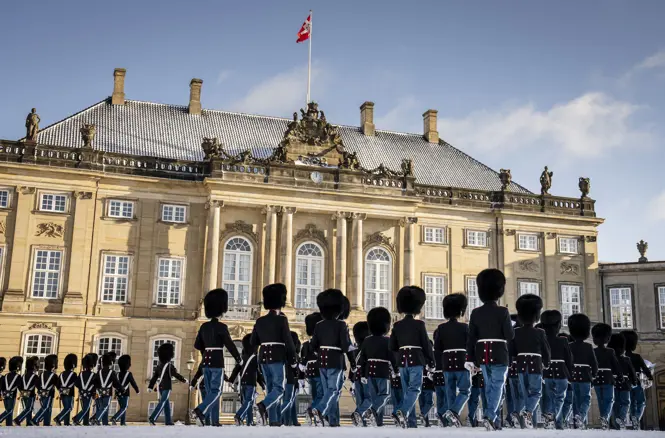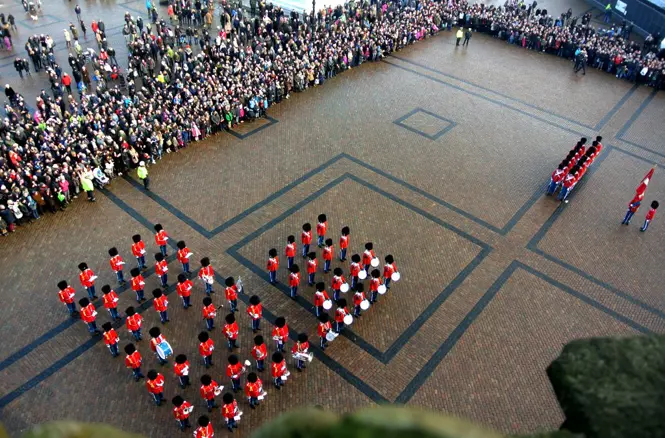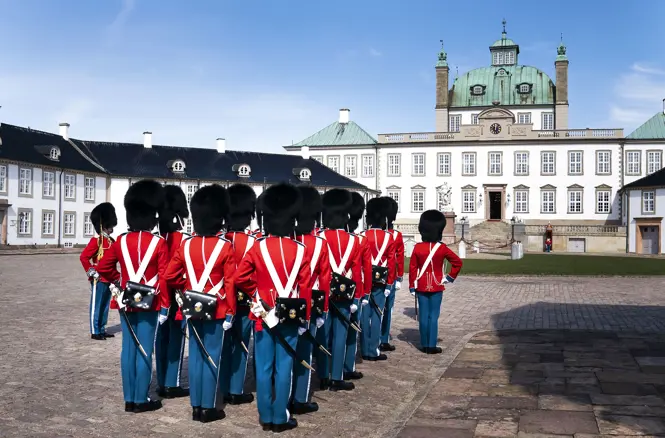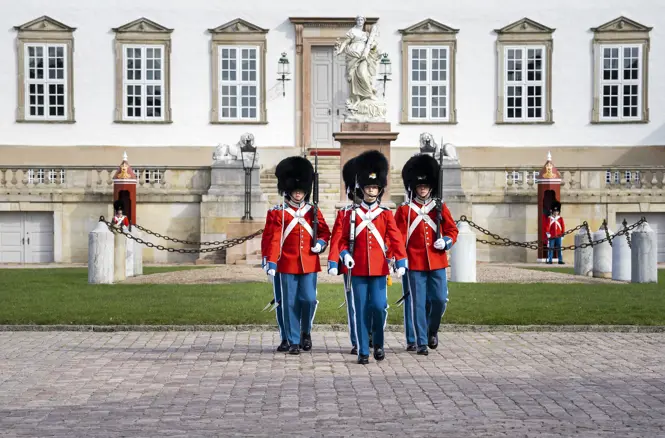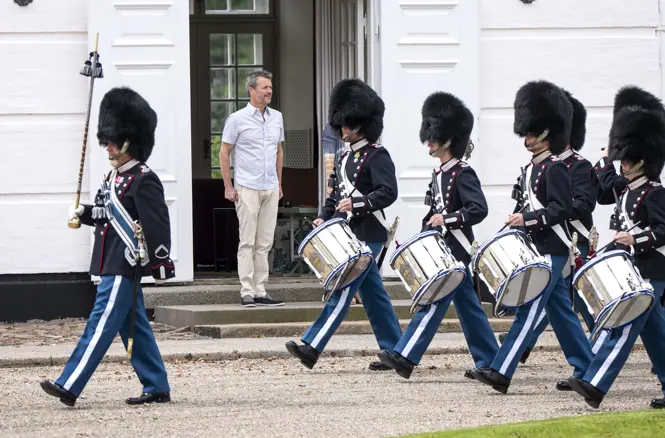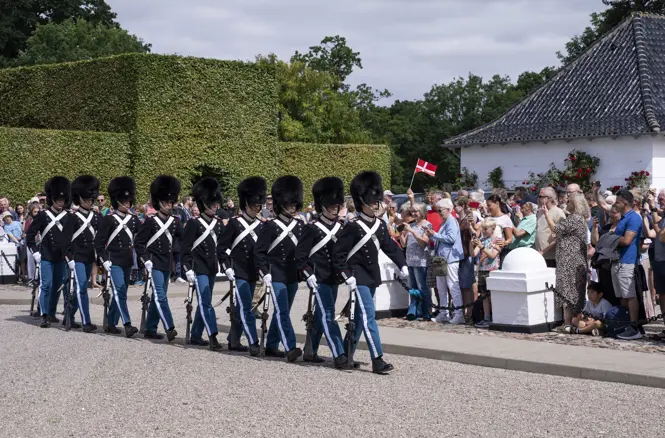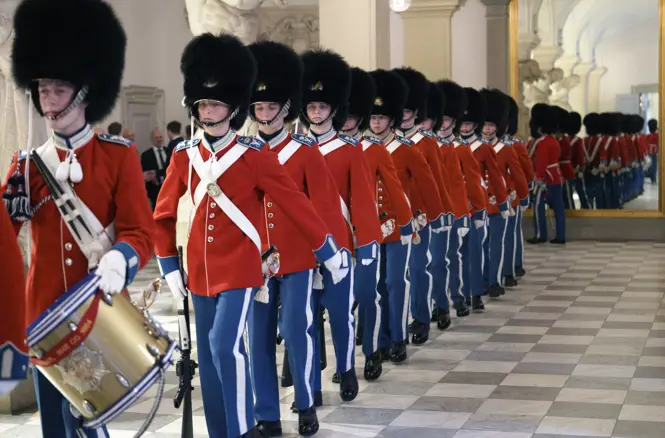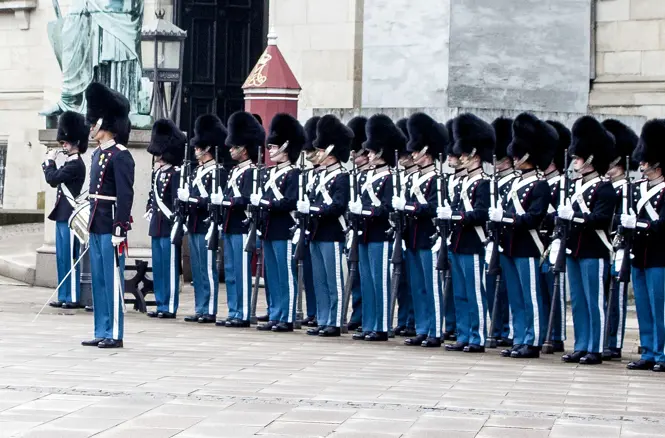
On this page, you can read more about The Royal Life Guard’s ceremonial duties.
The Royal Life Guard
The Royal Life Guard was established by Frederik III on 30 June 1658. The Life Guards were to both protect Frederik III as head of state in an appropriate way and be a combat troop regiment in the army. The regiment has carried out these two duties ever since. The current regiment was originally The Royal Foot Guard, as Denmark also had at its disposal The Royal Horse Guard from 1661 until 1866. Besides the Life Guard’s Barracks at Rosenborg Palace and the Høvelte Guard Barracks, the Life Guard has quarters at the palaces. The Life Guard’s motto is “Pro Rege et Grege” (For King and People).
The Royal Life Guard’s organization has changed over time. In recent years, the Life Guard’s international engagement has become a central part of life in the regiment. The Life Guard has thus continued both as a combat troop regiment on par with other regiments and a regiment that carries out watch and ceremonial duties for the Royal House of Denmark.
Amalienborg
The Life Guard stands watch for the royal family. When HM The King resides at Frederik VIII's Palace, King’s Guard is established at Amalienborg. During this, you can hear music on Amalienborg Palace Square every day around 12:00.
At Amalienborg, there is a changing of the guard daily. There are three types of guard: King’s Guard, Lieutenant’s Guard and Palace Guard.
During the King’s Guard, there is a daily parade from the Life Guard’s Barracks on Gothersgade, Copenhagen, at 11:27. The march towards Amalienborg passes, among other things, the Round Tower and Kongens Nytorv.
Just before 12:00, the parade marches in on the palace square, where the watch being relieved is standing at attention with their rifles. The guards coming on watch march to the left of the equestrian statue and conduct a so-called front march towards the residence palace. The flag of the incoming guard is picked up in Fanegemakket (the flag room), and a flag march is carried out. The flag, which is the command symbol, is handed over to the flagbearer by the Adjutant on Duty. Afterwards, there is a changeover march between the guards being relieved and the guards coming on watch. When this is concluded, a post replacement patrol is sent out, and it changes the guards at the sentry boxes. At the same time, the officers of the incoming and relieved watches go to The King to report for and stand down from the guard duty. On the palace square, the Band of The Royal Life Guard performs a brief concert.
Then, the retiring watch is ready to march home when it repeats the ceremony with the front march and then delivers the flag in Fanegemakket (the flag room) to the Adjutant on Duty. When the flag is handed over, the march back to the Life Guard’s Barracks takes place, while the band plays. On the homeward march, the guards pass Frederik’s Church (The Marble Church) and Store Kongensgade, among other things.
During the watch duty day, post relief is carried out every two hours.
The King’s Guard is established at Amalienborg when The King resides there. There are also two other types of watches: Lieutenant’s Guard and Palace Guard.
Lieutenant’s Guard is established when HRH The Crown Prince as regent, or HM The Queen, HM Queen Margrethe, HRH Prince Joachim or HRH Princess Benedikte as acting head of state, resides at Amalienborg.
Palace Guard is established when The King resides at one of the other palaces or on the Royal Yacht Dannebrog. Thus, there will always be at least a Palace Guard at Amalienborg.
Fredensborg Palace
At Fredensborg Palace, the guard is established when The Royal Family resides at the palace at the Chancellery House.
When The King resides at the palace, a King’s Guard is established. In connection with the start of a residency, a detachment from the Royal Life Guard is dispatched; it can carry out the guard duty as an independent unit.
The changing of the guard takes place each day at 12:00 in the Inner Palace Yard. The guards coming on watch march from the palace’s barracks in the Outer Palace Yard on the first quarter-stroke of the palace clock.
On Fridays, either the Royal Life Guard’s Band or the Drum Corps takes part in the changing of the guard. On this day, the march begins at Fredensborg Station.
On Fridays, the officers from the detachment are replaced, and, in this connection, there will be a registration and deregistration for The King. Below the main steps, the band entertains with a short concert.
When the retiring guards are ready to march off, they will march to the right on the lawn, and, there, honor is paid to The King.
Graasten Palace
At Graasten Palace, the guard is established when The Royal Family resides at the palace.
When The King resides at the palace, a King’s Guard is established. In connection with the start of a residency, a detachment from the Royal Life Guard is dispatched; it can carry out the guard duty as an independent unit.
The changing of the guard takes place daily at 12:00 on the square in front of the guardhouse. The march sets out from “The Palace in Gråsten” at 11:43 along Ahlefeldtsvej – Borggade – Slotsgade – Slotsbakken and Felstedvej.
On Fridays, the so-called Friday Parade is carried out with the participation of the Band of The Royal Life Guards. This day, the changing of the guard takes place in the palace courtyard, where, during the changeover, the band plays a short concert in front of the Middle Wing in the presence of the royal family members residing there.
Marselisborg Palace
At Marselisborg Palace, the guard is established when The King resides at the palace.
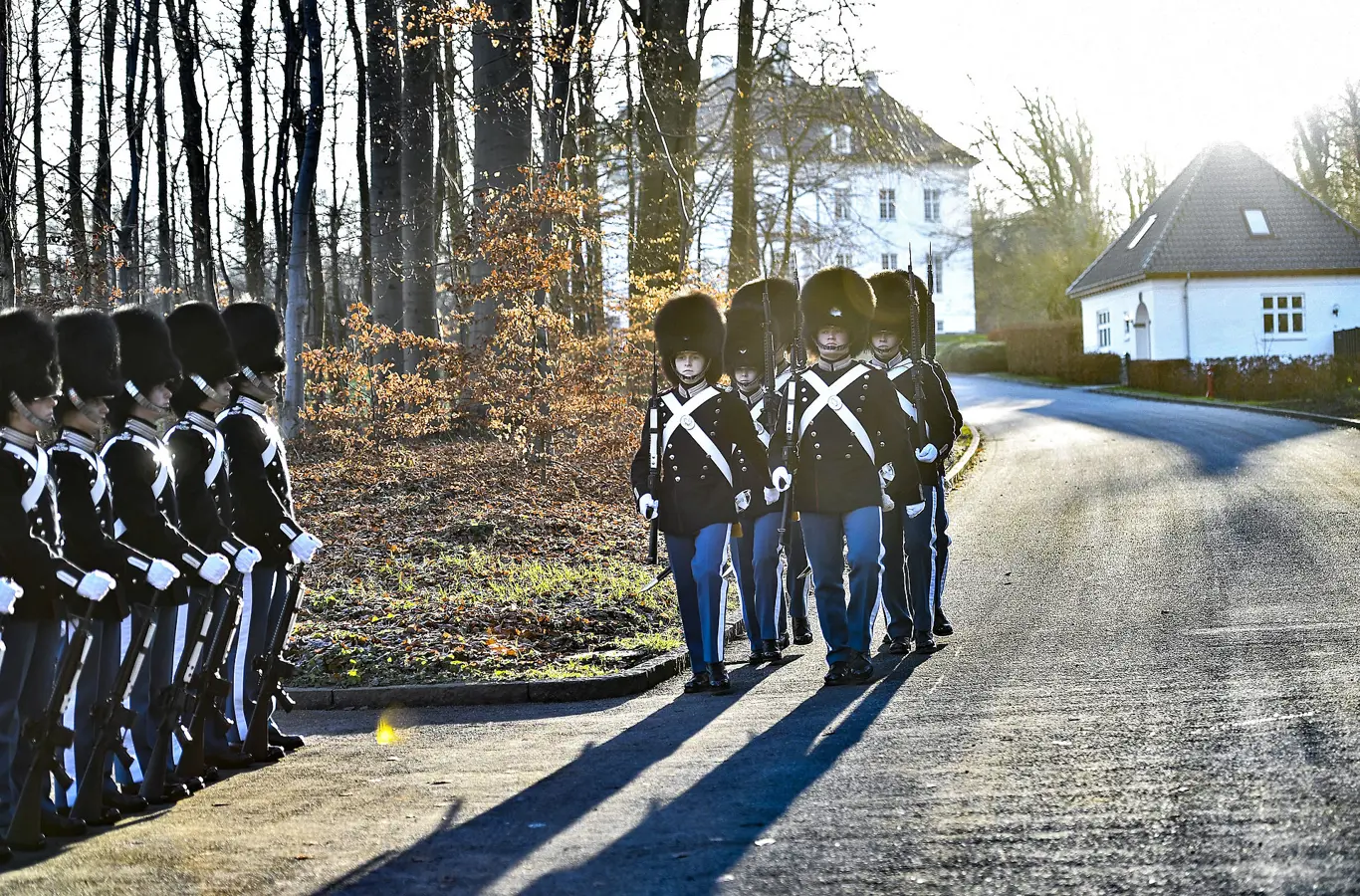
When The King resides at the palace, a King’s Guard is established. In connection with the start of a residency, a detachment from the Royal Life Guard is dispatched; it can carry out the guard duty as an independent unit.
The changing of the guard takes place daily at 12:00 on the square in front of the guardhouse. The march from the Guard Barracks begins at 11:50 and goes along Skovridervej – Carl Nielsens Vej to the main entrance to the palace.
Christiansborg Palace
At Christiansborg Palace, the guard is established when The King holds arrangements at the palace.
The King’s Guard, including participation of a guard force from the Royal Life Guard and a command unit by foot from the Guard Hussar Regiment, is, for example, established for New Year’s levees, gala banquets or similar major events.
A Lieutenant’s Guard is established when The King holds a public audience or when a Council of State is held. For small arrangements including The King’s participation, a Lieutenant’s Guard is also established.
The Royal Marches
A special musical tradition in Denmark is the royal marches, which means that certain pieces of music have been composed for the monarch or members of The Royal Family.
In the mid-1800s, a special tradition of music occurred in Denmark through the composition of personal marches for the Monarch and members of The Royal Family.
For centuries, military marches have been used to empower and encourage soldiers before battle. With a military band in front, it was also made sure that marching troops kept in step. This is significant for the marches because they accompany the Guards’ ceremonial duties at the royal palaces.
Over the years, the sounds of royal marches have accompanied the changing of the guard at the royal residence and at other major events in The Royal House . Also, the various marches have contributed to portray The Royal Family, as hidden references and greetings have been incorporated in the tunes.
Initially, the royal marches were gifts from the composers to the Monarch. However, in modern times the marches have been created in close cooperation with the relevant member of The Royal Family.
